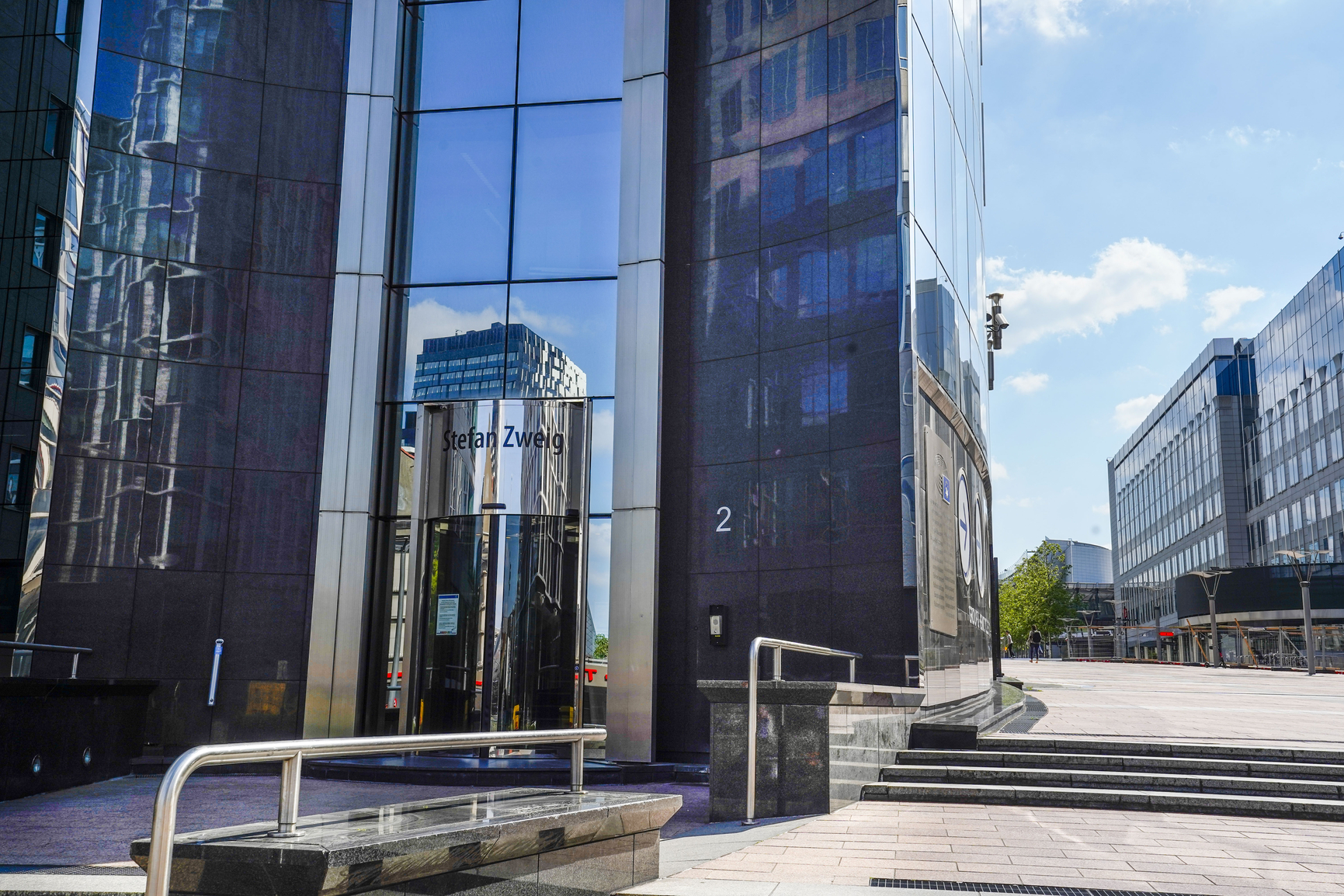 EP Headquarters in Brussels - Stefan Zweig building © European Union 2020 – European Parliament
EP Headquarters in Brussels - Stefan Zweig building © European Union 2020 – European Parliament
An Austrian writer and fervent advocate of a united Europe between the wars...
Although a servant of Europe long before the birth of the EU, Zweig only recently became part of the highly exclusive group of people to lend their name to a European Parliament building.
The Atrium building on Rue d'Ardenne in Brussels was only renamed the ‘Stefan Zweig’ in early 2019, a fitting tribute to this man of letters, a popular writer and advocate of a united Europe, who opposed all extreme forms of nationalism and was forced into exile by the Nazis. But who was he?
Unlike the other dignitaries who have seen their names immortalised in this way, this Austro-Hungarian writer, born in 1881, has no direct link with Parliament. He was neither an MEP, nor a politician, nor an advocate of a European Parliament, but rather a playwright, journalist, biographer and writer. His commitment to the European ideal is not widely known, however.
 EP Headquarters in Brussels - Zweig building © European Union 2020 – European Parliament
EP Headquarters in Brussels - Zweig building © European Union 2020 – European Parliament
The Erasmus programme
Although perhaps few would cite him among Europe’s intellectual founding fathers, his accomplished vision of Europe shines through, in both in his rich correspondence with other European intellectuals and the lectures he gave across the continent. His words convey a message about his ‘desire for Europe’, seeing as he did a united continent as a precondition for a peaceful future. Aware of Count Coudenhove-Kalergi’s campaign for European unity, Zweig became a member of his ‘Paneuropa’ organisation.
Zweig sought to build a European identity as a bulwark against the rise of nationalism. He saw ‘detoxifying’ Europe of the sickness of nationalism as a key step in building a united Europe. 1932 saw him write some astonishing passages in ‘the Moral Detoxification of Europe’, foreseeing a united Europe built on university exchanges, the precursors of the Erasmus programme.
But this did not stop with students. He also called for workers at government authorities to spend a few months at other such bodies elsewhere in Europe.
A supranational identity
One of his ideas, in line with his training as a journalist, was a ‘common European publication, a magazine or, preferably, a daily newspaper’, with the same content published in all of Europe's languages.
In another text written in 1934, ‘The Unification of Europe’, set out specific proposals to ‘build a Europe of Europeans’, very different from the ECSC and the EEC that came to pass. He saw cultural exchanges as the vanguard of this transformation, since ‘it is culture that must cement Europe’, thus putting politics to one side. He called for schools to teach the history of culture instead of the history of wars and conquests, so that young people would view culture as a common good.
Zweig was a humanist who advocated the creation of a ‘United States of Europe’. He firmly believed that we needed to create a supranational identity, a European identity, a positive counterpart to the historical idea of a ‘white race’ brandished by the most virulent of extreme right-wing groups. Zweig showed that another Europe is possible, a Europe of citizens, a Europe of culture, an idea that inspired him to write ‘The World of Yesterday: Memories of a European’, one of his most ‘relevant’ works today.
Overcome with grief about how the war was going, Stefan Zweig took his own life in 1942 while living in exile in Brazil.